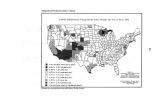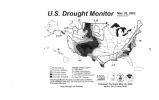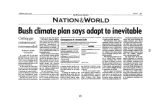| OCR Text |
38 Awareness and Education It is one thing to realize more water is being used than is needed and another to know what to do about it. For example, studies show that automatic sprinkler systems are often initially set at the rate needed to meet the peak demand during July and August and left at this setting for the entire season. These systems could reduce water use by 40 percent to 50 percent if changes were made biweekly. Information on the amount of water and automatic timer settings is provided on the State of Utah water conservation web page and is being communicated on local television station's weather forecasts. Incentive Pricing and Billing Water conservation efforts have been most effective when incentives are in place to motivate the public to use water more efficiently. The Governor has directed the state water resource agencies to encourage incentive pricing to water users. The Division of Water Resources is responding by providing technical information and help for water retailers to develop incentive pricing water rate structures and has made this a requirement for receiving state aid for water resource projects. Technologies For many years the Board of Water Resources has provided low interest or no- interest loans to agricultural irrigation companies to improve water system efficiencies. These system improvements include canal lining, transmission and distribution pipelines, and sprinkler irrigation systems. The State of Utah intends to continue to participate in these types of endeavors to use advancing irrigation technology in the agricultural sector to increase water use efficiencies. In the municipal and industrial ( M& I) sector, we need to encourage increasing water efficiency. New household appliances and plumbing fixtures use less water to accomplish the same tasks as older appliances and fixtures. New landscape irrigation controllers that apply only the necessary amount of water for landscapes have great potential. Two- thirds of M& I water use in Utah is for landscape irrigation, and local university horticulturists tell us the most common problems in Utah residential landscapes are connected to over- watering. We can reduce landscape irrigation water use by 40 percent if only the correct amount of water is applied. In Utah, the majority of our water supply comes from melting snowpack. An accurate assessment of the snowpack and other hydroclimatic variables is necessary to accurately predict water availability several months in advance. In addition stream gauging is an important tool in assessing water supply availability. These activities have primarily been a responsibility of the Federal Government through the Natural Resource and Conservation Service and the United States Geological Survey and the State of Utah is very concerned that federal funding for these programs has not kept pace with the increasing costs of providing this vital information. Conclusion The State of Utah is committed to improving our water- use efficiency both in the agriculture industry as well as in the municipal and industrial sector. We believe we have implemented programs that will be successful in doing this in the long run. Utah would like to see the Federal Government temporarily suspend the grazing restrictions on CRP lands and other federal lands that could provide relief to farmers and ranchers in Utah during the currant drought. Utah would also like to see the process for Federal drought financial aid be accelerated so as to meet the current needs in Utah's agricultural sector before it is too late. The Federal Government also needs to be prepared to aggressively suppress fires this summer in Utah that threaten our watersheds. In addition increased Federal funds need to be provided on an ongoing basis to adequately fund stream gauging and snowpack monitoring throughout the western states. |


























































































